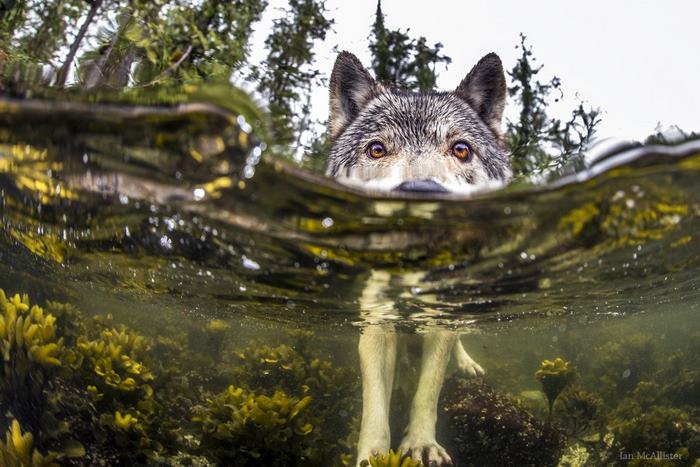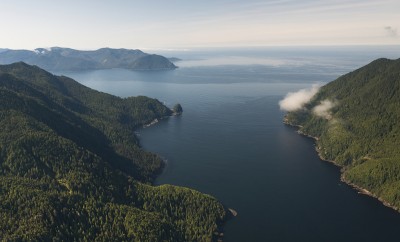Animals
Meet British Columbia’s Rare and Genetically Distinct Sea Wolves

Image: boredpanda.com
What are “Sea Wolves?”
You’ve probably already seen the short snippet being shared around social media recently depicting the rare sea wolves which can swim amazingly long distances and live essentially off the ocean. Alongside a brief description of the animals, the viral article has recently outside interest of the adaptations of the wolves known only to the remote coastal regions of British Columbia. Tied to a 2015 National Geographic photography contest, the images are the original work of Ian McAllister, a wildlife photographer who studied the reclusive creatures for many years prior to receiving recognition from NatGeo. The images’ appearance in the popular wildlife magazine resulted in sweeping worldwide fascination and the desire to protect the animals, and according to McAllister, the ensuing call to protect the evolutionarily distinct animals isn’t arriving a bit too soon.
What Makes Them Unique?
The mostly unknown sea wolf lives along the central and northern coast of B.C.’s Great Bear Rainforest, consuming substantial amounts of salmon for several months annually, as well as other ocean prey like seals and sea lions instead of their inland kin’s favorites of moose, deer, and beaver. They can reportedly swim for miles between the regional coastal islands and have grown familiar with the sea life sufficiently to even be found picking apart a whale carcass or digging through the area’s sand and rocks for crabs and clams when need be. Some are even said to be exclusively native to the outlying islands, never seeing inland prey at all during their lives.
Why Protect Them?
Believed to be genetically unique from other wolves, they are smaller in size and appear morphologically different as well, prompting McAllister and others involved with area conservation to request their protection from the British Columbian government. Having examined the results of DNA studies, McAllister confirms attributes necessary to designate the wolves as evolutionarily significant exist, and hopes that efforts to protect them from hunting and trapping will be successful. Now that the proper recognition is pending, the needed protection may soon be put into place.
Will It Happen Soon Enough?
But McAllister worries about the speed of things, as he fears that ongoing projects such as the Northern Gateway Pipeline and LNG development in the area will further threaten the animals by disrupting their already limited habitat. Says McAllister, “Oil and LNG tankers would certainly place many of these wolves at risk in the event of a catastrophic spill.” He follows that, “The government still considers wolves as vermin. We have learned a lot and society has changed how it views wolves, but there is still a lot of work to be done to really recognize how fortunate British Columbia is to have these unique wolf populations. So we are going to ramp up our public education, advocacy and research to hopefully see a day when these wolves have the kind of protection they need.”
Want to see the sea wolves in action? Step over to the live cams of their natural habitat set up by Pacific Wild’s live field cams to catch a glimpse of them today.





0 comments